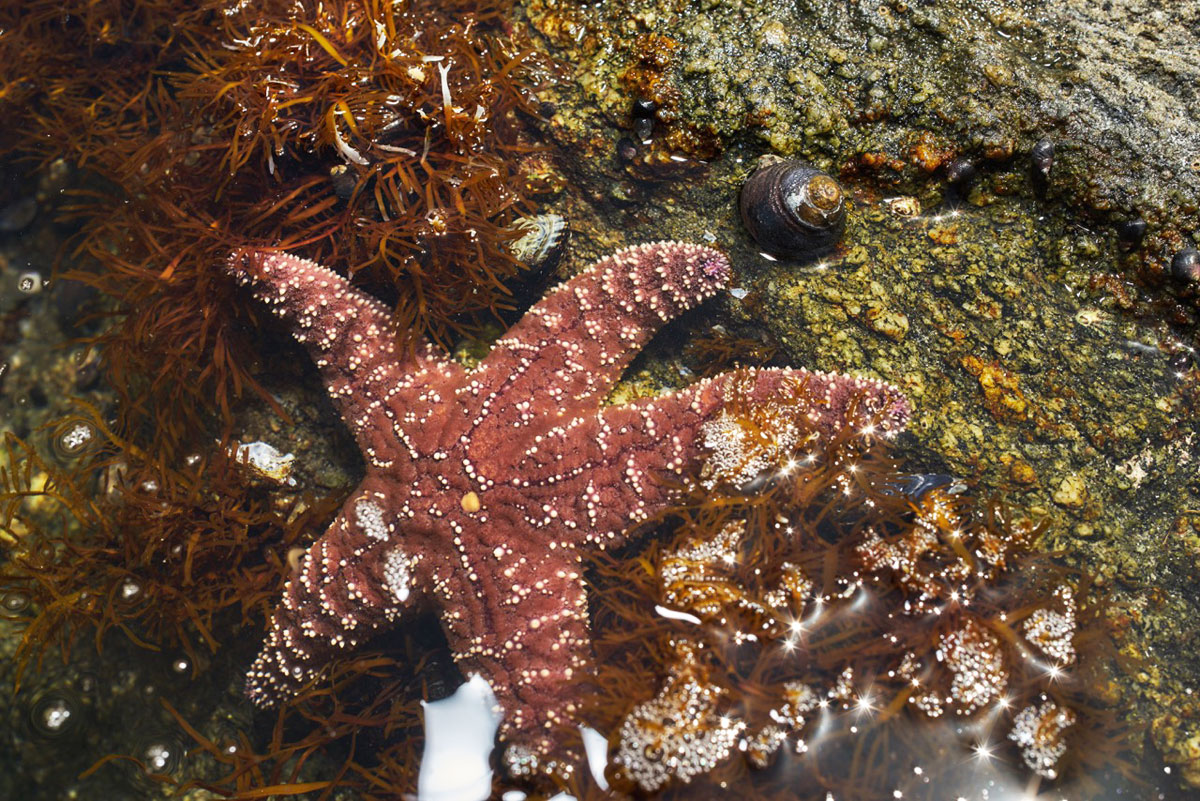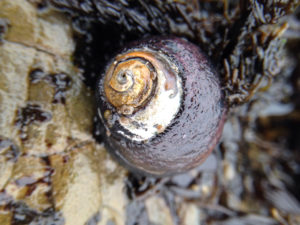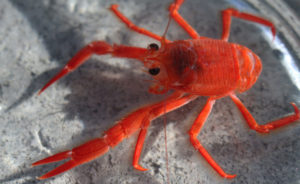Marine snails, it turns out, are famous among biologists for fleeing from their predators. You can stick them in a tank, insert a starfish, and watch the snails speed away. “I think the most amazing part to me is how dramatic the escape response is,” says Brittany Jellison, a graduate student at the UC Davis Bodega Marine Lab who has studied the way ocean acidification affects snail intelligence and behavior. “And how quick it actually is. They’ll climb out the water within two minutes if the cue concentrations are strong enough, and the risk is high.”
So here, courtesy of Jellison’s lab, is an unbelievable video of a black Tegula snail in full flight from a marauding sea star:
(Now here is the irresistible comparison to the opening scene in Star Wars: A New Hope. The little snail above races across the tank, like Princess Leia’s spaceship, followed by the giant, camera-obliterating arm of a Pisaster sea star, like the Imperial star destroyer. You’ll have to imagine the lasers.)
A number of articles in recent years have showed that marine animals start to suffer impaired behavior as the water they live in gets more acidic. Rockfish, for example, can suffer from anxiety because the more acidic water causes them to modify their own body chemistry, acting on a neurotransmitter in their brains. Clownfish lose the ability to find their way back to their own homes. (In an acidifying ocean, we are all Dory.) Jellison and her colleagues wondered what you’d see in California coastal tidepools, where there are often dramatic pH fluctuations. If you turned up the acid on snails, would they still flee when they smelled a sea star?
On June 29, they published an answer in the Proceedings of the Royal Society B: as the water gets more acidic, the snails lose their ability to flee.
Or at least, they stop fleeing effectively. Jellison recorded three different measures of the snails following the introduction into their tank of sea star scent: the total distance the snail traveled, the shape of the path the snail followed (to measure whether the snail was in flight or just wandering looking for something to graze on), and the time the snail spent out of the water. Jellison considered the last one the most important behavioral response, because it shows whether the snails are actually escaping to safety, versus just sort of running around blindly. And there was a strong result: snails exposed to lower-pH water did not “properly respond to predation risk,” the paper says.
It’s a complex and fascinating response. Even in the lower pH tanks, the snails were able to move fine, and seemed also to detect the sea star scent cue. They just didn’t get out of the water like they normally would. It’s unclear exactly why, except that ocean acidification is increasingly well-documented to mess with animal behavior. “These findings imply the potential for disruption of a substantial number of consumptive and non-consumptive links within the food web,” Jellison wrote in the paper. “The possibility that many coastal species may exhibit altered responses to predator cues under ocean acidification could play out strongly in intertidal systems along the west coast of North America.”
The next step is to take the lab experiment and try it in a more complicated real-world setting. Jellison says she plans to spend this summer watching snails in the tidepools in Bodega Bay. “We’ll use the ones in nature to see all the complexity beyond what we see in the lab,” she says, “and to see signs of these impairments.”





